Hinohara village's ancient history footsteps
revealed by the place names.

Hinohara village was progressed region
in Kanto region in Japan more than 1000 years ago.
|
《 For many maps, it may takes a little time to switch the screen. 》
|
guide: Komakitsu Okabe
|
|
|
|
People who made old Hinohara Village
People who made the refugee settlements of the valley land Hinohara
and people who lived there
|
Kanoto-iwa means "the entrance rocks to the shrine."
|
|
The road through there reaches Mt. Otake (1267m), where Zao Gongen (座生権現 = a god ) is enshrined.
The both rocks are called Kanoto-iwa (God entrance rocks).
The upstream of Kanoto-iwa is called Akaizawa (赤井沢), and Akaizawa Shrine is enshrined at the upstream of the river. There is a story that a samurai doctor named Daizen Akaizawa lived there to grow herbs. Even now herbs can be found around the shrine.
A tunnel was made through the right rock in 1962, and the good transport links to the north were made.
|
【 Kanoto-iwa (神戸岩) 】
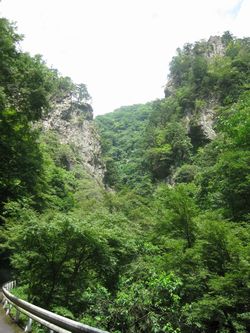
|
|
【 Akaizawa Shrine (赤井澤神社) 】
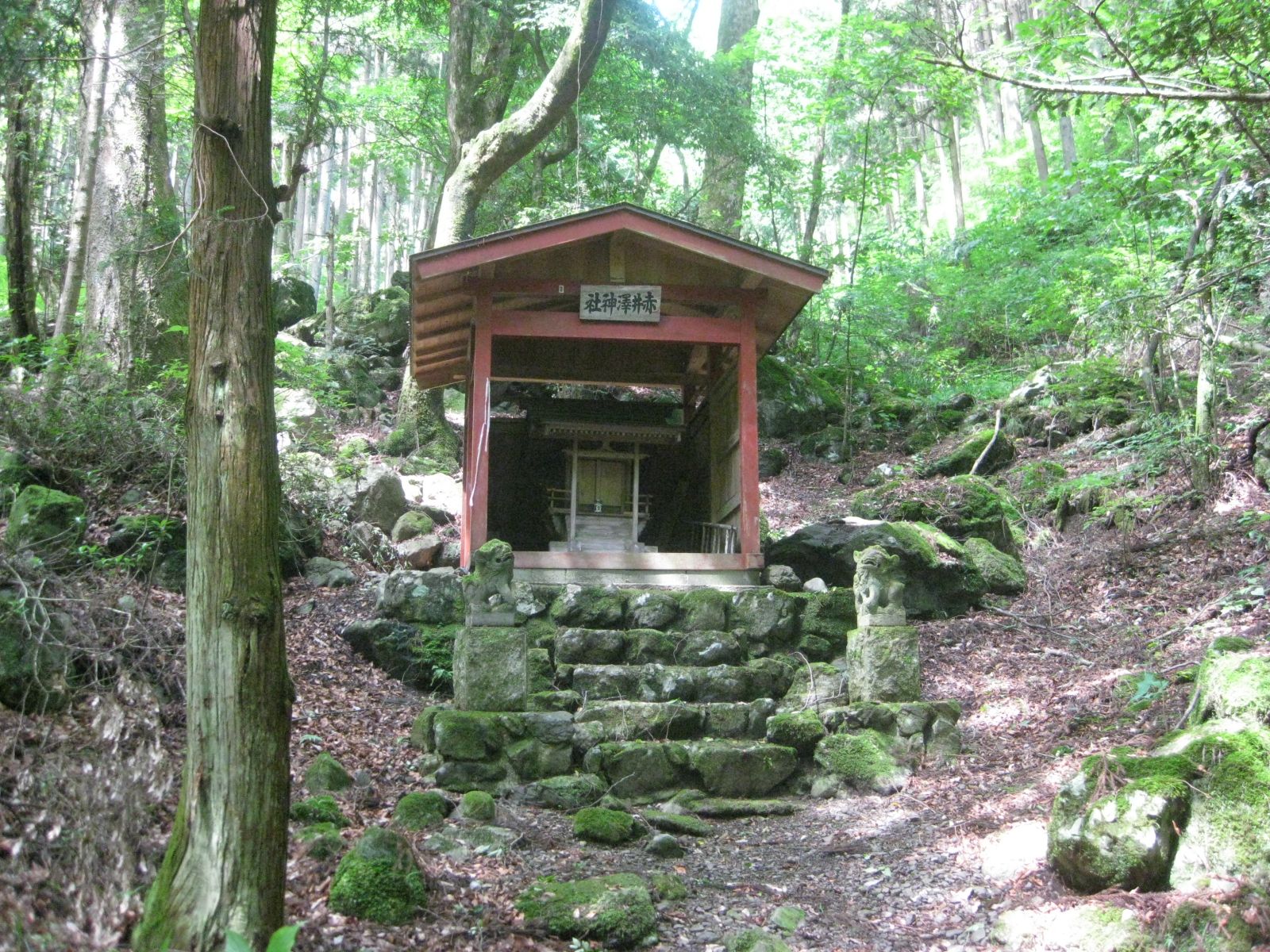
|
【 Kanoto rock tunnel and the bridge 】
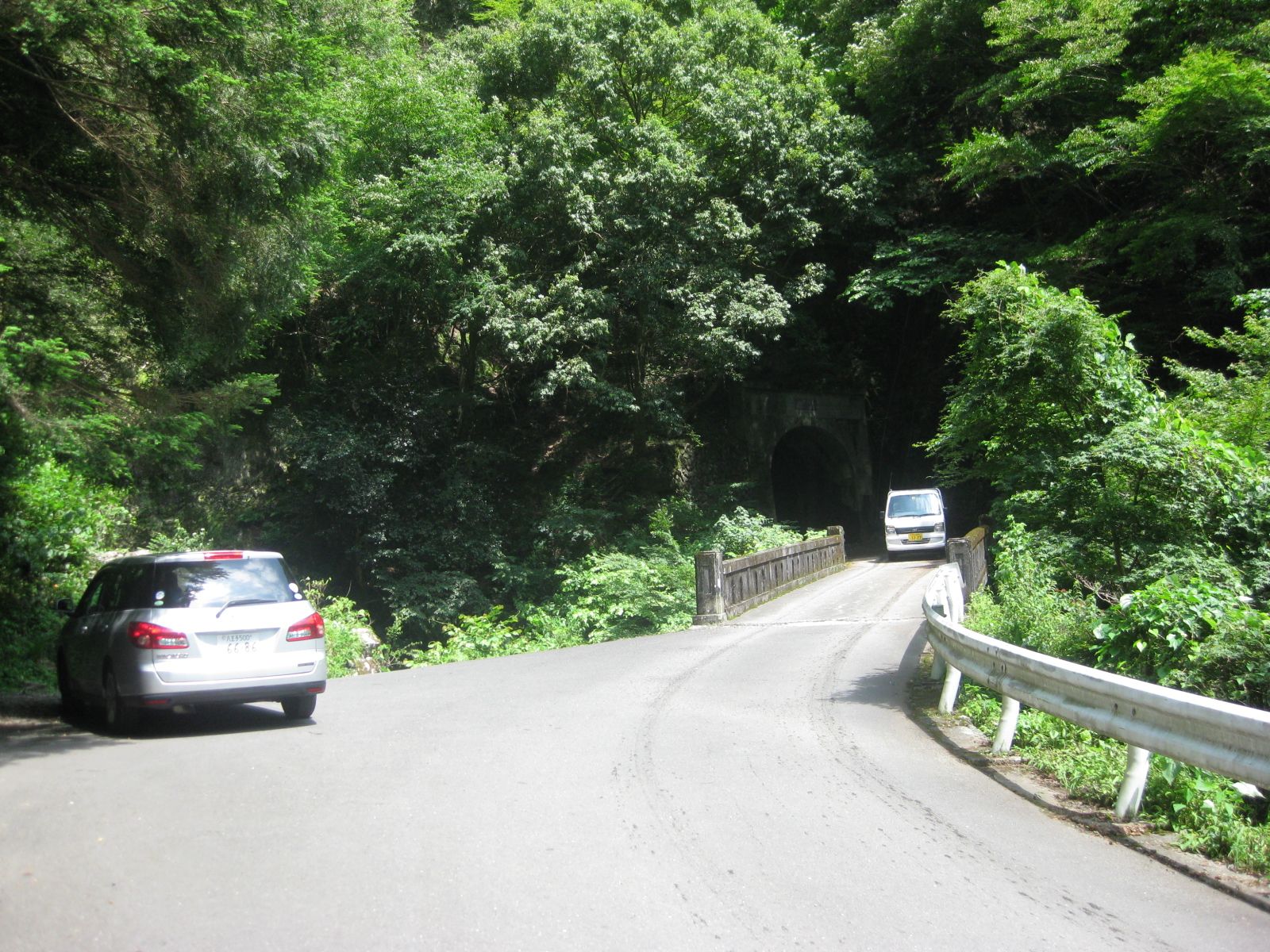
|
(Note: Akaizawa Shrine is located at 1.9km upstream from Kanoto -iwa. The shrine is at about 10m off on the right side of the forest road. )
Downstream of Kanoto-iwa is called Kanoto River and river moss was caught until around 1950. Because river moss lives at clean water where no people comes, the river was probably beautiful valley river. Rock tripe was harvested on the right big rock.
Zao Gongen (a god) was enshrined at the place through Kanoto-iwa by the Yamato military settlers who came to this land in Nara Era. And the head of the Tachibana family who settled the land in the Nara Era, have a responsibility to the faith.
This chief changed to Tachibana family at Yawari in Nakazato in Muromachi Era. Even today, people of Yawari becomes chief of the shrine, and continues the festival.
■Helpful Site (in Japanese)
神戸岩
Rock tripe = イワタケ - Wikipedia
|
"Kawanori" is originated in "river moss" (Kawanori in Japanese).
|
Place names "Kami-kawanori" (上川乗) and "Shimo-kawanori" (下川乗) in south valley of Hinohara were expressed using 川苔 (kawanori = river moss).
However, since timber was transported to Edo (now Tokyo) using
the river in the end of Edo era through to Meiji era, river moss disapeared from the river. And the place names changed to "川乗り"
(Kawanori = river ride).
|
【  上川乗 and 上川乗 and  下川乗 】 下川乗 】
Kami-kawanori Shimo-kawanori
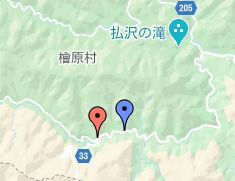
より大きな地図で 川乗 を表示
|
【 Raft flow in old days
(offered by Itsukaichi Folk Museum in Akiruno City) 】
■Helpful Site (in Japanese)
五日市郷土館 (あきる野市)
|
Hattate in Kashiwagino was prosperous with textile and sericulture.
|
Stepping in the district of Kashiwagino (柏木野) in Hinohara village, we see impregnable steep cliffs on the north shore of South Akigawa River.
The place is called Hattate, and there is the prefectural paved road over the cliffs now.
Standing beside Akigawa River beneath the cliff bring us in a quiet, calm feeling because the mixed sound of a stream flowing down from the west and different stream flowing from just around the east side of the rapids, sounds like the sound of weaving.
|
【 Aki River near "Hattate"
seen from the bridge 】

A road reaches to the bridge from
the prefectural road nearby Hattate.
The east side of the river rapids
is seen from the back of "Yamabukiya".
|
( Note: A mound of the silkworm and a remain of grain atorage, more than 50 masks and an old cloth are unconfirmed. They are under investigation.)
In the Muromachi Era, Sakamoto family settled in the west of Hattate and had momentum.
At one point, Mr. Sakamoto offered that he was told from the god enshrined near the south river over three days and nights, "Move in a high place because now place is noisy with the sound of the hooves of horses". And the god was enshrined in a high place away from traffic.
Mr. Sakamoto moved the enshrined "Eleven-Facies God" (十一面観音) to the top of Mt. Usuki (臼杵山) with hefty young men.
His subordinate was in the position of gatekeeper of the climbing road to the summit at Sasadaira (笹平). The subordinate's family name was Sasaki. The site where there was the old shirine is called "Miyanosawa" (= river with a shrine) even now.
It is equivalent to amulets of Otake Shrine those are very important among the fmilies in the North Valley.
In entertainment, the Kabuki is transmitted. And Shikisanbaso (式三番叟) has been taken over to Sasano (笹野) in how about the time.
In the area named Kashiwagino (柏木野), different ancestors settled in the east and west of Hottate (機立), and now has become one settlement.
|
【 The only existing former storage
house in Hinohara village. 】
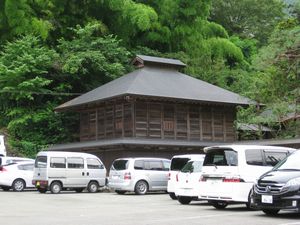
The storage house stands across the
street in front of Hinohara village office.
|
【  Hattate (機立) Hattate (機立)
  Kashiwagino (柏木野) Kashiwagino (柏木野)
 Sasano (笹野) 】 Sasano (笹野) 】

より大きな地図で 笹野 と 柏木野 を表示
|
■Helpful Site (in Japanese)
YouTube-式三番叟
|
|
|
|
|